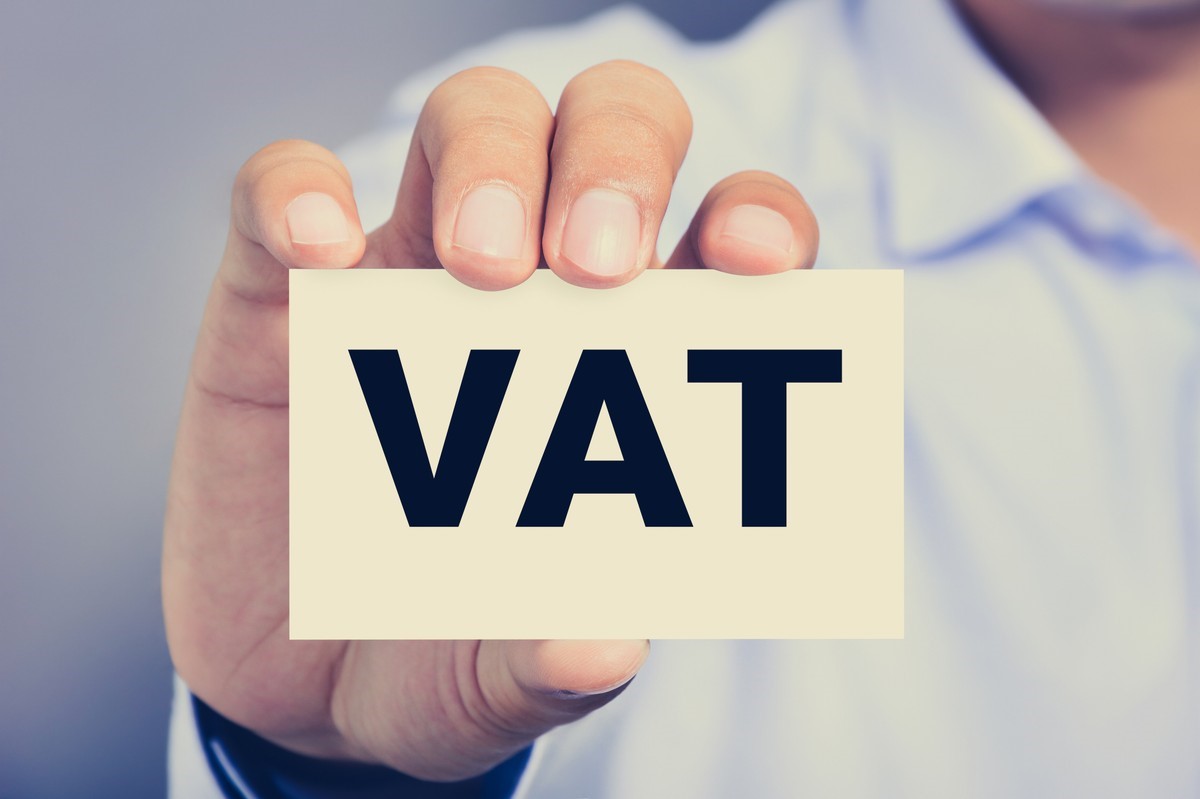Finance
The Growth of ESG Investing A Comprehensive Perspective

In recent years, ESG (Environmental, Social, and Governance) investing has gained significant traction within the global financial markets. Investors, both institutional and retail, are increasingly aligning their portfolios with their values, placing a premium on sustainability, ethical practices, and strong corporate governance. ESG investing focuses on companies that meet high standards in these three areas, creating a framework for responsible investment. As of 2024, ESG has evolved from a niche strategy into a mainstream investment approach that is shaping financial markets and influencing corporate behavior globally.
What is ESG Investing?
At its core, ESG investing evaluates companies based on three criteria: environmental impact, social responsibility, and governance practices. These criteria help investors identify businesses that are not only financially sound but also contribute positively to society and the environment. Let’s break down these components further:

Photo by Pixabay: https://www.pexels.com/photo/1-us-dollar-banknotes-259132/
- Environmental (E): This factor assesses a company’s impact on the environment, including its efforts to reduce carbon emissions, manage natural resources responsibly, and develop sustainable practices.
- Social (S): This evaluates how companies treat their employees, customers, and communities. It considers factors like labor practices, diversity and inclusion, community engagement, and consumer protection.
- Governance (G): Governance refers to a company’s leadership structure, transparency, and business ethics. It includes elements like board diversity, executive pay, shareholder rights, and anti-corruption measures.
Companies that excel in these areas are seen as less risky and more likely to have long-term sustainable growth, making them attractive to investors looking for a balance between profit and principles.
The Rise of ESG Investing: Key Drivers
Several factors have contributed to the rise of ESG investing in 2024. Let’s explore the key drivers:
- Growing Awareness of Climate Change and Social Issues
As climate change, social inequality, and corporate misconduct have gained public attention, investors have become more aware of the impact their investments have on these issues. Companies that take proactive steps toward sustainability and social responsibility are attracting more capital as investors seek to support positive change. - Regulatory Pressure and Government Policies
Governments and regulatory bodies worldwide are tightening regulations around environmental practices, labor rights, and corporate governance. New laws and regulations, such as the European Union’s Sustainable Finance Disclosure Regulation (SFDR) and the U.S. SEC’s enhanced ESG disclosure requirements, have compelled businesses to improve transparency and adopt more sustainable practices. - Changing Investor Preferences
Millennials and Generation Z are becoming a larger portion of the investor base, and these generations prioritize ESG factors more than previous ones. They want to invest in companies that align with their values, pushing the demand for ESG-focused financial products like mutual funds, ETFs, and green bonds. - ESG Performance and Long-Term Profitability
Many studies suggest that companies with strong ESG practices tend to outperform their peers over the long term. These companies often have lower risks, such as legal issues or environmental fines, and are more likely to maintain positive brand reputations. This relationship between ESG factors and financial performance has made ESG investing an attractive option for risk-averse investors.
ESG Investing in 2024: Market Trends and Growth
The growth of ESG investing in 2024 can be measured by various indicators, including assets under management (AUM), market participation, and the development of ESG products. According to industry reports, global ESG-related assets are projected to surpass $50 trillion by the end of 2024, representing more than a third of total global assets under management.
Several key trends are shaping the ESG landscape in 2024:
- Proliferation of ESG Investment Products
The number of ESG-focused mutual funds, exchange-traded funds (ETFs), and bonds has skyrocketed. Investment firms are introducing more thematic funds, such as those focused on clean energy, water management, or gender equality, providing investors with more opportunities to align their investments with specific ESG goals. - Enhanced ESG Reporting Standards
With increasing demand for transparency, companies are being held to higher standards in ESG reporting. Globally accepted frameworks like the Global Reporting Initiative (GRI), Sustainability Accounting Standards Board (SASB), and the Task Force on Climate-related Financial Disclosures (TCFD) are being widely adopted. Companies are now under pressure to provide clear, standardized reports on their ESG practices, making it easier for investors to assess and compare their ESG performance. - Impact of Technology and Data Analytics
Advanced technologies like artificial intelligence (AI) and big data analytics are playing a pivotal role in assessing ESG metrics. Investors are using sophisticated tools to analyze non-financial data, such as satellite images of deforestation or social media sentiment on labor practices, allowing them to make more informed ESG investment decisions. - Globalization of ESG Standards
ESG investing is no longer confined to developed markets. Emerging markets are also adopting ESG principles, driven by the rising middle class and increased awareness of sustainability issues. This globalization is broadening the ESG investment universe, providing new opportunities and challenges for investors.
Challenges and Criticisms of ESG Investing
Despite its growth, ESG investing faces several challenges and criticisms, especially in 2024 as it becomes more mainstream:
- Greenwashing Concerns
One of the biggest challenges is “greenwashing,” where companies or investment products are marketed as more environmentally or socially responsible than they actually are. Some firms use ESG as a public relations tool without implementing meaningful change, leading to skepticism among investors. - Lack of Standardization
Although ESG reporting standards have improved, there is still no universal framework for measuring and comparing ESG performance. Different rating agencies may use different criteria, making it difficult for investors to trust the ratings or compare companies accurately. - Short-Term Performance Pressure
Some investors argue that focusing too heavily on ESG factors may come at the expense of short-term financial returns. Companies that prioritize long-term sustainability may need to make costly changes, which could hurt profitability in the short term, leading to tension between ethical investing and financial performance.
ESG Investing vs. Traditional Investing: A Comparative Analysis
| Criteria | ESG Investing | Traditional Investing |
|---|---|---|
| Focus | Considers environmental, social, and governance factors in investment decisions. | Primarily focused on financial returns and risk. |
| Performance | Companies with strong ESG practices may offer long-term sustainable growth. | Short-term profits and financial returns are the main objectives. |
| Investment Universe | Focuses on companies with ethical practices; excludes sectors like fossil fuels and tobacco. | Includes all sectors, including those with high environmental or social risks. |
| Risk Management | ESG factors can help mitigate risks like environmental fines, reputational damage, and regulatory changes. | Financial risk management is the primary concern; less focus on non-financial risks. |
| Investor Motivation | Attracts investors seeking alignment with personal values and sustainability goals. | Appeals to investors looking solely for financial gain. |
Future Outlook of ESG Investing
Looking ahead, ESG investing is set to continue its upward trajectory. Here are some predictions for the future:
- Stricter Regulatory Environment
With climate risks and social inequalities becoming more pronounced, governments are likely to impose stricter regulations on ESG reporting and corporate responsibility. This will create a more transparent investment environment, making it easier for investors to make informed decisions. - Integration into Mainstream Finance
ESG investing will no longer be viewed as an alternative strategy. Instead, ESG factors will become integral to the investment decision-making process, influencing everything from stock valuations to credit ratings. - Technological Advancements in ESG Analysis
Technology will continue to revolutionize ESG investing. As AI and machine learning technologies improve, ESG data collection and analysis will become more precise and accessible, empowering investors to make data-driven decisions. - Focus on Diversity, Equity, and Inclusion (DEI)
In addition to environmental concerns, social factors like diversity, equity, and inclusion will become more prominent in ESG assessments. Investors will demand that companies take concrete steps toward improving workplace diversity and fostering inclusive cultures.
Analysis Table: Growth of ESG Investing (2019–2024)
| Year | Global ESG Assets Under Management (AUM) (in trillion USD) | Key Trends |
|---|---|---|
| 2019 | 30.7 | Early growth phase, rising awareness of climate risks. |
| 2020 | 35.3 | Pandemic accelerates interest in social responsibility. |
| 2021 | 40.5 | Expansion of ESG funds and green bonds. |
| 2022 | 45.6 | Regulatory pressure on corporate ESG disclosures. |
| 2023 | 48.7 | Increased standardization of ESG reporting frameworks. |
| 2024 | 50+ | Widespread adoption of ESG principles in emerging markets. |
Conclusion
As of 2024, ESG investing is more than a trend—it’s a transformation in how individuals and institutions approach the financial markets. The integration of environmental, social, and governance factors into investment strategies is reshaping industries, driving sustainable growth, and pushing businesses to become more responsible corporate citizens. While challenges like greenwashing and lack of standardization remain, the future of ESG investing looks promising, offering a pathway toward a more sustainable and ethical global economy.
Finance
Capital Asset Scheme UAE VAT: What Businesses Need to Know
Business
7 Key Advantages of Choosing AIMS for Your Islamic Banking Journey

Introduction
The global economy is witnessing a paradigm shift as ethical finance and Islamic banking gain prominence. For students and professionals eager to venture into this dynamic field, acquiring the right qualifications is essential. AIMS Education positions itself as a premier institution offering cutting-edge certifications in Islamic banking, tailored to both beginners and experienced professionals. Whether you are passionate about ideological alignment, financial innovation, or professional growth, AIMS delivers a comprehensive educational experience designed to meet market demands.
Why Islamic Banking Education Matters
Islamic banking provides innovative solutions rooted in ethical principles and centuries-old traditions. With estimates projecting the global Islamic finance industry to exceed $3 trillion by 2025, qualified professionals will be in high demand. Pursuing accredited and practical learning programs, like those offered by AIMS, ensures you’re not only part of this transformation but also positioned to lead it.
When considering a career in Islamic banking, selecting the right educational partner is crucial. Islamic banking is growing rapidly as more businesses, governments, and financial institutions adopt Sharia-compliant practices. Whether you’re a seasoned finance professional or an aspiring student seeking to make your mark, Accredited Institute of Management Studies (AIMS) offers unparalleled opportunities to enhance your expertise through globally recognized Islamic banking courses. Here, we explore the 7 key advantages of choosing AIMS for your Islamic banking education and career development.
7 Key Advantages of Choosing AIMS for Islamic Banking
1. Flexibility and Accessibility for Global Learners
One of the standout features of AIMS is its flexibility for students and professionals around the world. Their Islamic banking courses, including certifications, diplomas, and advanced programs, are designed for online learning. Whether you’re juggling work, family, or other commitments, the platform’s accessible structure allows you to study at your own pace, anytime, anywhere.
- Courses are fully online, removing the need for travel or physical attendance.
- Perfect for students seeking affordable, high-quality education on a global scale.
- Detailed video tutorials, guided readings, and discussion forums foster an immersive learning experience.
These flexible options ensure that international students and working professionals alike can seamlessly integrate learning into their busy lives.
2. Enhanced Career Opportunities and Professional Development
Gaining Islamic banking expertise from an accredited institution signifies professionalism and credibility. The certifications offered by AIMS open doors to diverse financial roles, including those in Islamic banking, insurance (takaful), investment, and asset management.
- Graduates often land lucrative opportunities in multinational banks and financial firms.
- Certification boosts your resume and marketability in a competitive job environment.
- Programs are tailored to equip learners with practical knowledge and job-ready skills.
AIMS ensures learners gain actionable insights, enabling them to excel in real-world scenarios.
3. Comprehensive and Accredited Programs
Accreditation stands as a hallmark of quality in education. AIMS courses are vetted and certified by global accreditation bodies, enhancing the credibility of its programs. The certifications also receive wide acceptance by employers, universities, and industry associations.
- Accreditation guarantees that content aligns with international standards.
- Employers recognize AIMS graduates as highly skilled and professionally certified.
- Continuous updates ensure students learn the most relevant practices, preparing them for evolving challenges within Islamic banking.
By undertaking AIMS programs, you gain not just education but also credibility in the job market.
4. Bridging Theory and Practical Application
Islamic banking isn’t just about understanding theory; it’s about applying those principles in today’s global financial ecosystem. AIMS engages learners with real-world case studies, simulations, and exposure to contemporary practices. Topics such as the mudaraba meaning as a profit-sharing agreement in Islamic economic structures and Islamic leasing (Ijarah thumma al-bay’) take center stage. Through engaging coursework, students graduate ready to bridge the gap between theoretical concepts and practical execution.
Programs place a strong emphasis on the mudarabah principle in Islamic business partnerships, enabling students to structure Sharia-compliant business agreements with confidence. This holistic approach ensures you graduate with the ability to solve real-world financial challenges ethically and efficiently.
5. Real-World Success Stories
AIMS’s impact can be best understood through the eyes of its alumni, who have successfully transitioned into thriving careers in the Islamic finance sector.
- Fatima L., UAE: A working professional managing a family business, Fatima completed the Advanced Diploma in Islamic Banking. The international recognition of her qualification allowed her to secure partnerships with major Islamic financial institutions.
- Ahmed S., UK: After earning an Islamic Banking Certification with AIMS, Ahmed was promoted to lead the Islamic banking division at a multinational bank. He credits the program’s case-study-driven approach for giving him the knowledge to lead confidently.
- Sara K., Malaysia: A newcomer to finance, Sara found AIMS’s beginner-friendly programs to be the perfect start. She now works as a middle-manager focusing on Sharia-compliance auditing.
Real stories like these demonstrate how AIMS transforms education into tangible returns for its students and alumni.
6. Relevance in the Current Job Market
The demand for Islamic banking professionals continues to rise as ethical finance expands globally. AIMS tailors its courses to meet these demands head-on. Graduating with an AIMS certificate ensures you’re perfectly positioned to secure roles in this lucrative field.
Islamic banking professionals can expect salaries 20% higher than their non-specialized counterparts.
Key skills such as Sharia-compliance auditing, risk assessment, and financial structuring are actively sought by employers in the sector.
Furthermore, the knowledge gained through certifications such as the Certified Islamic Banker (CIB) and other Islamic banking courses for beginners and working professionals in finance is directly applicable to roles in banking operations, investment management, and financial advisory services.
Conclusion
With its accredited programs, flexible learning options, and focus on real-world applications, AIMS stands out as the ideal choice for anyone aiming to excel in Islamic banking. The institute’s efforts to integrate theoretical understanding with practical knowledge ensure that graduates are career-ready and highly valued in the competitive global job market. Take the next step in your Islamic banking career by enrolling in AIMS courses. Explore the opportunities here and transform your future today!
7. FAQs About AIMS and Islamic Banking Education
Here are answers to some common questions about pursuing education with AIMS:
Q.1 Who can enroll in Islamic banking courses?
AIMS welcomes students and professionals globally, whether beginners or experienced finance workers.
Q.2 How long does it take to complete a course?
Depending on the course, completion can range from a few weeks to several months.
Q.3 Are degrees or certifications recognized internationally?
Yes, all AIMS certifications are accredited and widely respected in the financial industry.
Q.4 Can I balance work and study?
Absolutely. AIMS programs are designed with the flexibility to accommodate busy schedules.
Q.5 Are there specific career prospects after AIMS courses?
AIMS graduates often secure roles in Islamic finance, banking, and investment, and some assume leadership positions.
Finance
Must-Have Insurance Types Every Family Needs for Protection

Introduction
Life is full of surprises—some bring joy, others present challenges. As a parent or partner, you want to protect your family from financial hardship if the unexpected occurs. The right insurance policies provide a safety net, ensuring that medical bills, home repairs, or loss of income don’t derail your loved ones’ future. In this guide, we’ll explore the must-have types of insurance every family needs. You’ll learn how each policy works, why it matters, and tips for choosing the best coverage. By the end, you’ll have a clear roadmap to safeguarding your family’s health, home, and finances.
Must-Have Insurance Types Every Family Needs for Protection
1. Health Insurance
Why It Matters
Medical costs in many countries can be astronomical. Health insurance covers doctor visits, hospital stays, surgeries, and prescription drugs. Without it, a single serious illness or injury can wipe out savings.
Key Coverage Components
- Inpatient Care: Hospital room, surgery, and nursing fees.
- Outpatient Care: Doctor office visits, lab tests, and specialist consultations.
- Prescription Drugs: Generic and brand-name medications.
- Preventive Services: Vaccinations, screenings, and wellness checkups.
Tips for Choosing a Plan
- Compare premium versus deductible: lower premiums often mean higher out-of-pocket costs.
- Check the network of doctors and hospitals.
- Review co-pay and co-insurance percentages for specialist care.
2. Life Insurance
Why It Matters
If you pass away unexpectedly, life insurance provides a lump-sum payment to your beneficiaries. This money can cover funeral costs, debt repayment, mortgage payments, and future living expenses.
Types of Life Insurance
- Term Life: Coverage for a fixed period (10, 20, or 30 years). More affordable, ideal for young families paying off a mortgage.
- Whole Life: Lifetime coverage with a cash-value component that grows over time—higher premiums but permanent protection.
- Universal Life: Flexible premiums and death benefits, plus a cash-value account tied to interest rates.
Tips for Choosing a Policy
- Calculate the coverage amount: 10–15 times your annual income is a common rule of thumb.
- Choose the right term length to match your financial obligations (e.g., until kids graduate college).
- Compare quotes from multiple insurers to find the best rate.
3. Disability Insurance
Why It Matters
A serious injury or illness that prevents you from working can quickly deplete savings. Disability insurance replaces part of your income—typically 60–70%—if you can’t work due to disability.
Types of Disability Insurance
- Short-Term Disability: Pays benefits for 3–6 months following a waiting period of 14–30 days.
- Long-Term Disability: Kicks in after short-term coverage ends, providing benefits for years or until retirement age.
Tips for Choosing a Policy
- Look for policies that cover own-occupation disability: you’re covered if you can’t perform your specific job.
- Consider the elimination period: shorter waits mean higher premiums.
- Ensure the benefit period matches your needs—longer periods offer greater security.
4. Homeowners or Renters Insurance
Why It Matters
Your home is likely your family’s biggest asset. Insurance protects against damage from fire, storms, theft, and liability if someone is injured on your property. Renters insurance covers personal belongings and liability in a rented home or apartment.
Key Coverage Components
- Dwelling Coverage: Repairs to your home’s structure after a covered peril.
- Personal Property: Reimbursement for furniture, electronics, and clothing.
- Liability Protection: Legal fees and medical payments if a guest is hurt on your property.
- Additional Living Expenses: Hotel bills and meals if you’re displaced during repairs.
Tips for Choosing a Plan
- Have your home appraised or do a detailed home inventory to set adequate coverage limits.
- Check for discounts—bundling home and auto policies can lower premiums.
- Review exclusions, like floods or earthquakes, which often require separate policies.
5. Auto Insurance
Why It Matters
Car accidents can result in expensive repairs, medical bills, and liability claims. Auto insurance covers these costs and may be legally required in your area.
Key Coverage Components
- Liability: Covers bodily injury and property damage you cause to others.
- Collision: Pays for repairs to your vehicle after an accident.
- Comprehensive: Covers non-collision damage—vandalism, theft, or natural disasters.
- Uninsured/Underinsured Motorist: Protects you if another driver lacks sufficient coverage.
Tips for Choosing a Plan
- Compare deductibles: higher deductibles lower premiums but increase out-of-pocket costs in a claim.
- Check for safe driver and multi-car discounts.
- Review customer service ratings and claims processing times.
6. Umbrella Insurance
Why It Matters
An umbrella policy provides extra liability coverage beyond your home and auto limits—typically up to $1–5 million. This protects your assets if you’re sued for damages exceeding your standard policies.
Who Needs It?
- Families with significant assets or high net worth.
- Homeowners with a pool or trampoline—higher accident risk.
- Professionals who could face lawsuits (e.g., lawyers, doctors).
Tips for Choosing a Policy
- You usually need underlying liability limits of at least $250,000 on auto and home policies.
- Compare premium rates and coverage limits.
- Ensure your policy covers legal defense costs.
7. Critical Illness Insurance
Why It Matters
Life-threatening diseases cancer, stroke, heart attack carry high treatment costs and lost income. Critical illness insurance pays a lump sum upon diagnosis to cover medical expenses, mortgage payments, or experimental treatments.
Key Features
- Fixed Benefit Amount: You choose coverage level—often ranging from $20,000 to $100,000 or more.
- Payout on Diagnosis: Funds disbursed quickly to cover urgent needs.
- Survival Period: Some policies require you to survive 30 days after diagnosis to qualify for the payout.
Tips for Choosing a Policy
- Review the list of covered illnesses; some policies cover dozens of conditions, others only a few.
- Compare exclusions and waiting periods.
- Coordinate benefits with your health insurance to avoid overlap.
8. Long-Term Care Insurance
Why It Matters
As parents and grandparents age, they may need help with daily activities—bathing, dressing, or mobility. Long-term care insurance pays for assisted living, nursing home care, or in-home care, preserving family savings and relieving caregiving burdens.
Key Features
- Daily Benefit Amount: Covering $100–$300 per day for care services.
- Benefit Period: Payable for 2–5 years or lifetime, depending on the plan.
- Inflation Protection: Automatic increases in benefits to keep pace with rising care costs.
Tips for Choosing a Policy
- Buy early—premiums rise significantly after age 60.
- Choose a policy with a short elimination period (30–90 days) for faster payouts.
- Evaluate your family’s history of chronic illness to estimate care needs.
9. Travel Insurance
Why It Matters
Whether a family vacation or business trip, travel insurance covers trip cancellations, medical emergencies abroad, lost luggage, and travel delays.
Key Features
- Trip Cancellation/Interruption: Reimburses non-refundable trip costs due to covered reasons.
- Emergency Medical: Pays for hospital stays and evacuations overseas.
- Baggage Loss/Delay: Compensates for lost or delayed luggage.
- Travel Delay: Covers additional lodging and meals if your trip is delayed by more than a set number of hours.
Tips for Choosing a Policy
- Read covered reasons and exclusions carefully.
- Consider annual multi-trip plans for frequent travelers.
- Check if existing health insurance covers international emergencies.
10. Pet Insurance
Why It Matters
Veterinary bills for accidents or illnesses can add up fast. Pet insurance covers treatments, surgeries, and prescriptions, ensuring your furry family members get the care they need without breaking the bank.
Key Coverage Types
- Accident-Only Plans: Lower premiums, cover injuries from accidents.
- Accident & Illness Plans: Broader coverage, including diseases like diabetes and cancer.
- Wellness Add-Ons: Routine care for vaccinations and dental cleanings.
Tips for Choosing a Policy
- Enroll young—pre-existing conditions are generally excluded.
- Compare annual limits and deductible levels.
- Check reimbursement rates (e.g., 70%, 80%, or 90%).
Conclusion
Protecting your family requires a well-rounded insurance portfolio. Health insurance keeps medical costs manageable, while life and disability insurance safeguard income and loved ones’ futures. Homeowners, auto, and umbrella policies shield your property and assets. Critical illness and long-term care insurance prepare you for life’s toughest health challenges. Don’t forget travel and pet insurance for comprehensive coverage. By choosing the right mix of these must-have insurance types, you ensure your loved ones are financially secure and stress-free, no matter what life brings.
-
Business2 years ago
Cybersecurity Consulting Company SequelNet Provides Critical IT Support Services to Medical Billing Firm, Medical Optimum
-
Business2 years ago
Team Communication Software Transforms Operations at Finance Innovate
-
Business2 years ago
Project Management Tool Transforms Long Island Business
-
Business2 years ago
How Alleviate Poverty Utilized IPPBX’s All-in-One Solution to Transform Lives in New York City
-
health2 years ago
Breast Cancer: The Imperative Role of Mammograms in Screening and Early Detection
-
Sports2 years ago
Unstoppable Collaboration: D.C.’s Citi Open and Silicon Valley Classic Unite to Propel Women’s Tennis to New Heights
-
Art /Entertainment2 years ago
Embracing Renewal: Sizdabedar Celebrations Unite Iranians in New York’s Eisenhower Park
-
Finance2 years ago
The Benefits of Starting a Side Hustle for Financial Freedom
































